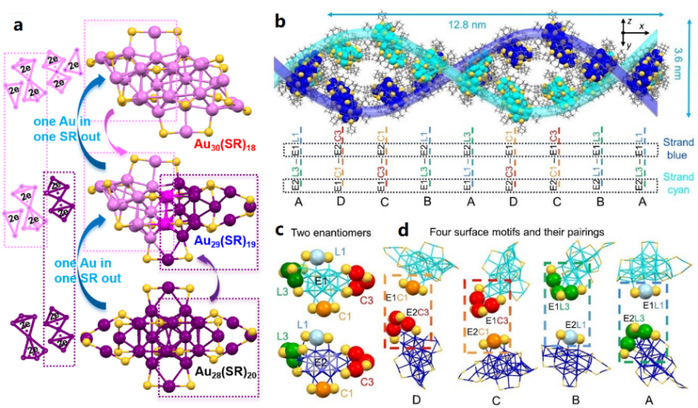Recently, Song Yongbo,a young scholar and teacher from School of Biomedical Engineering at AHMU, has published his research findings in the world-renowned journal Nature (IF: 42.778). The paper was entitled Double-helical assembly of heterodimeric nanoclusters into supercrystals. The findings feature the helical assembly of the atomically precise nanoclusters, and the analysis of its formation mechanism at the atomic level.

The co-first authors are Dr. Li Yingwei from Department of Chemistry, Carnegie Mellon University, Pittsburgh, PA, USA, Dr. Zhou Meng from Department of Physics, University of Miami, Coral Gables, FL, USA, and Dr. Song Yongbo, from School of Biomedical Engineering, Research and Engineering Center of Biomedical Materials, AHMU. Prof. Jin Rongchao, from Department of Chemistry, Carnegie Mellon University, Pittsburgh, PA, USA, is the corresponding author. It is the first time that teachers from AHMU, as co-authors, have their papers published in Nature.
“In double-helical structure, two chiral enantiomers are observed in Au29, and each one has four different surface motif structures, with two motifs coming from Au28 and two from Au30. In self-assembly, the two neighboring enantiomers of any Au29 nanocluster approach each other by matching their C1 and C3 staple motifs, or their L1 and L3 staple motifs. This is reminiscent of the double helix of DNA, in which there are two strands and four nucleobases (thymine, adenine, cytosine and guanine). While the nanoparticles are approaching each other, forming the superlattice, anisotropic interactions drive the rotation of the Au29 to such that their surface motifs of the neighboring enantiomeric nanoclusters match. Thus, the double (four) spiral pattern of self-assembly structure comes into being.” When introducing their findings, Prof. Song said that it was miraculous to have a direct observation of the biological feature in the assembly of inorganic nanoparticles. It provided us with an exploratory approach to the revelation of the commonality between organics and inorganics at the atomic level.
